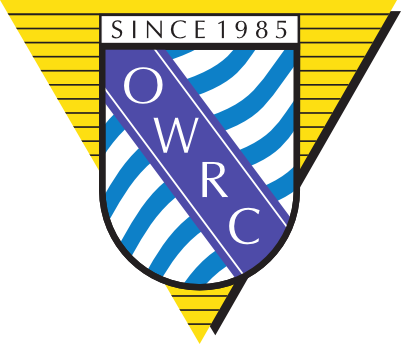MARIN COUNTY ROWING FRIENDS WIN
70-MILE OVERNIGHT RACE ON PUGET SOUND;
SET NEW COURSE RECORD
Thiago Silva, 36, of Greenbrae, CA, and Connor Jones, 30, of Mill Valley, CA, last weekend won one of the West Coast’s most challenging open water racing events for human-powered boats, a 70-mile endurance test called the Seventy48. Rowing in a borrowed boat, the two covered the course on Puget Sound’s notoriously choppy open water in 9 hours and 35 minutes. The best time posted in this race in previous years was 9 hours 54 minutes in a double surf ski.
Silva, a Brazilian rower and paddler now coaching in Marin County outrigger canoe clubs, and Jones, a college oarsman who won a gold medal at the Under 19 World Rowing Championships in the USA Rowing eight-oared shell, started together at 7 PM from Tacoma, WA, at the southern end of Puget Sound and, rowing through the night, finished in Port Townsend, WA, at 4:35 the next morning.
They followed courses from a handheld GPS, lit their boat with battery-powered navigation lights and drank fluids steadily. For three hours, the water was relatively calm, but for the last six hours of rowing in the dark waves lapped into their boat constantly – and was drained through a Venturi-principle bailer in the bottom.
Jones and Silva met at the Open Water Rowing Center in Sausalito. They rowed against each other in that club’s Open Ocean Regatta, an annual event rowed on May 1st this year. They exchanged the lead several times over the 9-mile course out the Golden Gate and back into San Francisco Bay. After Silva won that race, they agreed to row their next open water challenge together and chose the Seventy48. The name comes from the basic challenge: row or paddle seventy miles on the open waters of an arm of the Pacific Ocean, with 48 hours allowed to finish the race. No motors, no sails, just muscles.
Jones and Silva borrowed their racer from the Maas Boat Company in Seattle. It was one of the company’s open water double sculls: 31 feet long and less than two feet wide at its widest, for two rowers, four oars and lots of guts. The Maas boats were designed and developed by Chris Maas, a Puget Sound resident, in the 1970s on San Francisco Bay. Built first in Richmond, CA, then near Seattle, these boats are rowed in rough water all over the world today.
Competitive rowing has traditionally been confined to inland lakes and rivers where the light, fragile – and very tippy – boats called shells can develop speed without much interference from waves. Inland, the shells are rowed by teams of men or women pulling one oar with two hands; or by scullers – men and women – with one oar in each hand. However, distance races on rough water have become a small, but growing, part of rowing.
There have been long distance rowing races on both coasts of the U.S. and off the shores of many countries around the world for years.
Two years ago, the world governing body for the sport of rowing, proposed a new Olympic event for open water racing: Coastal Rowing. The event was not included in the 2024 Olympic Games, but remains under consideration for the 2028 Olympics in Los Angeles.
The new racing discipline brought Silva – a competitive team rower in Brazil - to the U.S. as a competitive athlete and a coach. He has competed successfully for Marin Rowing Association in team boats and singles on flat water courses. But Silva is also an example of the farthest reaches of the sport. Rowing as part of a four-man team called Uniting Nations in an ocean-going boat, Silva and his teammates from France, Iceland and the U.S. rowed from Monterey Bay to Honolulu in just over 39 days – a record in 2016 that still stands in the Guinness Book of World Records.


